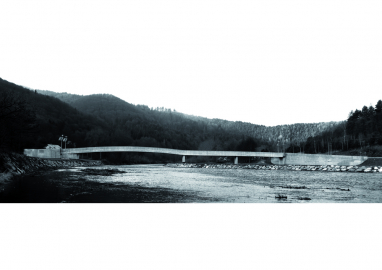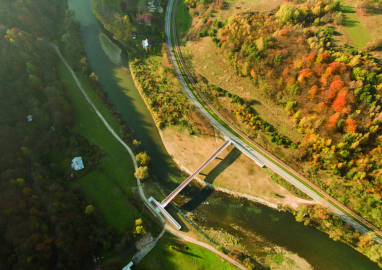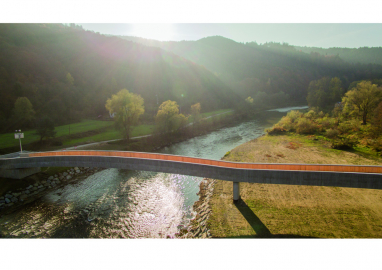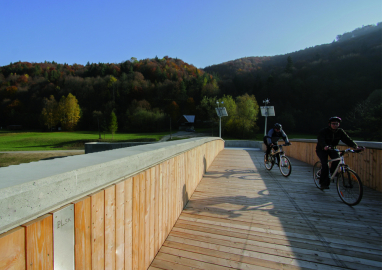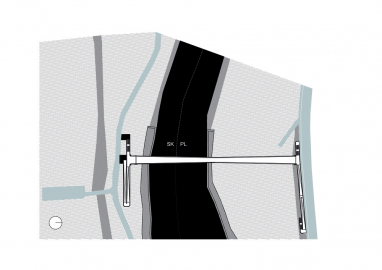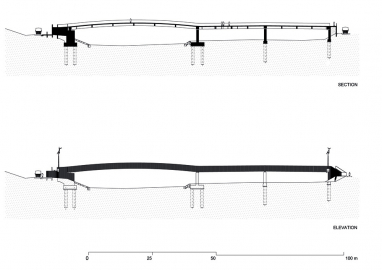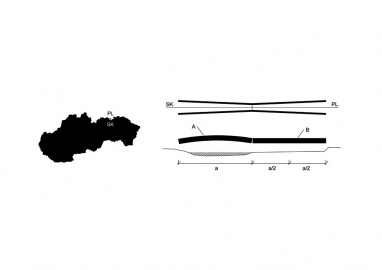Foot and Cycling Bridge
The architectural concept of the bridge is based on a binary composition. It consists of two separate elements: an arc and a line, united into a single entity.
Except being symbolic and iconic, the design has been determined by the requirement to bridge the Poprad river as well as the floodplain on the right bank. Arching over the watercourse with supports on both sides forms one element, while bridging the flooded area on the Polish side by a continuous beam represents another. The combination of these two elements forms the bridge that culminates over the midstream, which is the border between the two independent states, both of them parts of the united Europe.
The new crossing connects the village of Zegiestow on the Polish side with the village of Sulin in Slovakia. Zegiestow is characterised by a developed tourism with a rich tradition. The nearby mineral water spring, Sulinka, as well as the possibility of hooking into the hiking trails on the Slovak side is naturally expected to attract tourists towards the Slovak side of the Poprad river. The bridge design is characterised by a varying vertical and horizontal profile.
The load-bearing structure of the bridge consists of a continuous open beam profile. 'Railings' on both sides of the bridge are made of reinforced poured concrete walls. The surface of these walls is provided with a vertical trapezoidal groove pattern.
This finish has rendered the outer face more plastic, communicating with the sublime texture of the surrounding forest and at the same time making the bridge look lighter. On the inside, reinforced concrete walls of the bridge are clad with hardwood planks. The deck has been designed in a similar fashion – like "a walkable wooden carpet". Integrated into this internal cladding is an illumination system, using LED light fixtures.
Architectural and material concept is based on the contrast principle. Beautiful, yet "rough" natural environment determined our way of looking at the artistic and physical aspects of the project. In the past, the bridges were built out of stone; nowadays it is the architectural reinforced concrete that we use in lieu of stone. This architectural concrete with its rough appearance and natural colour contrasts with the greenery of the summer forest. The material looks different again against the backdrop of a colourful autumn landscape, while in winter the contrast with the surrounding environment becomes almost completely subdued. Raw appearance of the architectural concrete on the outside of the bridge is counterbalanced with lots of natural wood applied in cladding the inside faces. It is this natural material that a pedestrian will be confronted with.

